
Hidden and far away, many small populations have managed to prosper in hard-to-reach environments. A lifestyle that has allowed them to develop unusual traditions or to have tiptoed through history. Whether in lost valleys, in ravines or in high mountains, these towns show a beauty that comes from solitude. Perfect options to visit places where tranquility is permanent and depopulation is a threat. Therefore, discover these isolated villages of Spain perfect to disappear for a while.
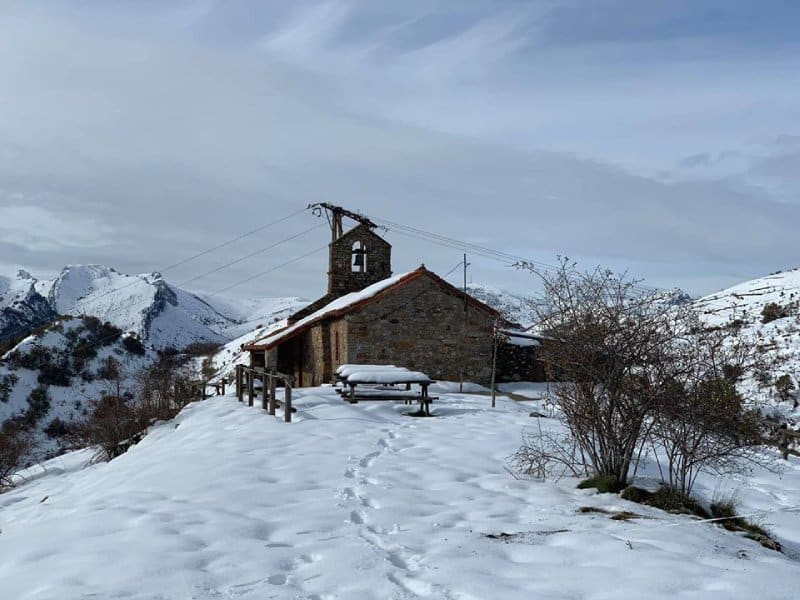
Hermitage of Paradilla de Gordón. | Facebook
Located in the Central Mountain area, in the north of León, Paradilla de Gordón awaits, high, those who dare to visit it. It only has a few houses and 5 inhabitants. In fact, it has declared itself an independent republic. To reach it, you have to take a road that at its end becomes very narrow, reducing itself to one lane. It is convenient to be careful if you visit it during winter, since if it snows the return becomes quite difficult.
Once you have passed this, it is turn to visit the local bar, which is located in the old school and has kept this original atmosphere. In addition, near the Romanesque church of Paradilla there is a viewpoint that overlooks a cliff. It has a gruesome history behind it, as several executions took place there during the Spanish Civil War. Coladilla, a town not too far away, is a good starting point to visit the place. As an additional advantage, it is a nice place to eat a tasty stew from León.
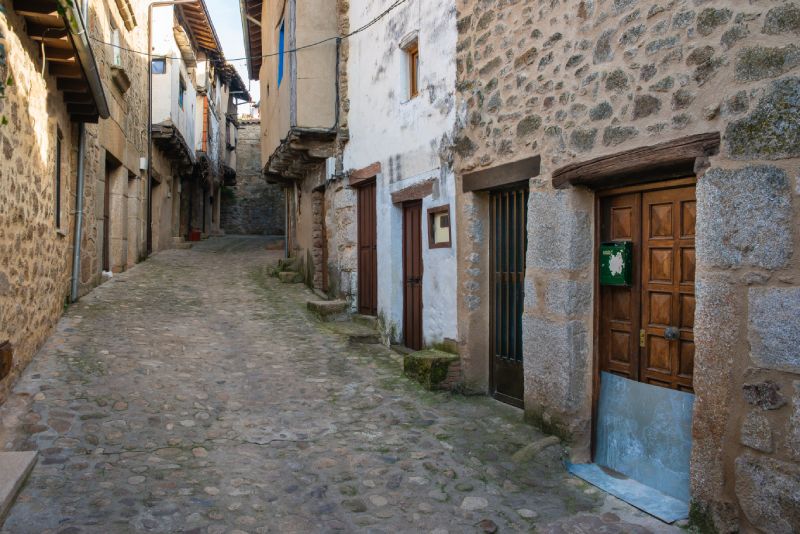
San Martín de Trevejo. | Shutterstock
Very close to the border with Portugal, known as La Raya, San Martín de Trevejo has managed to preserve its identity for centuries. Its location in the Sierra de Gata, where there are many mountain passes of over 1,400 metres, contributed to this. It is precisely at the foot of the Jálama where the town is located. It was a very disputed area between Portugal and Spain throughout history. Thanks to this, despite its geographical isolation, it has remained connected to the world and has more than 780 inhabitants.
Its main characteristic is that, despite being in Cáceres, A Fala is spoken, a controversial language that also reaches Eljas and Valverde del Fresno. It is believed to have emerged from the Galicians who repopulated the area during the Middle Ages. However, some people do not believe that it is a Galician-Portuguese dialect, but a distortion of Portuguese. In any case, the first option prevails.
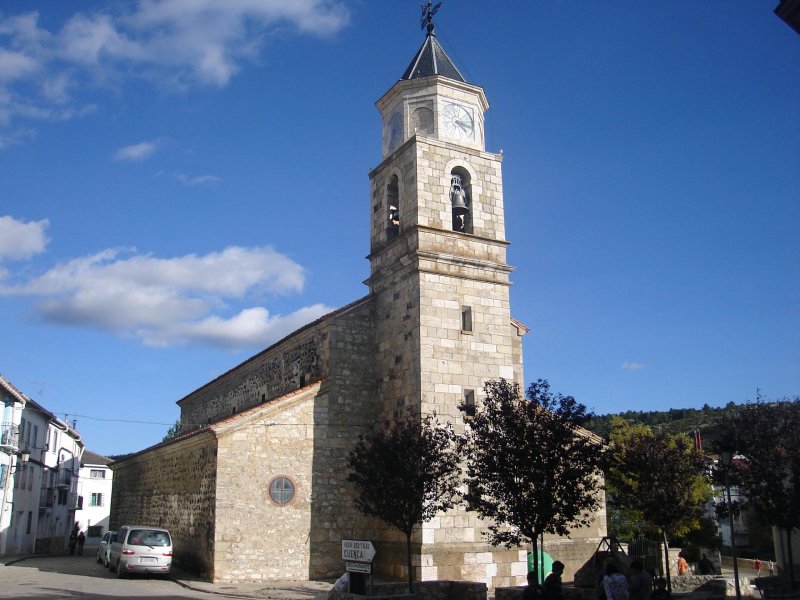
Church of Santiago in Guadalaviar. | Wikimedia
Both Guadalaviar and many of its neighbouring towns are embedded within the Montes Universales. This population is protected by the crossroads formed by the Upper Tagus between Guadalajara, Cuenca and Teruel. Surrounded by a meadow and many mountains, the village is a peaceful haven. As it is far from big cities, its ownership in the Middle Ages and early Modern Age was very uncertain. Thus, it lived as part of the Sesma of Villar de Cobo, one of the divisions of the villages of Albarracín. Like other isolated villages in Spain, depopulation has strongly affected the place in the last few years.
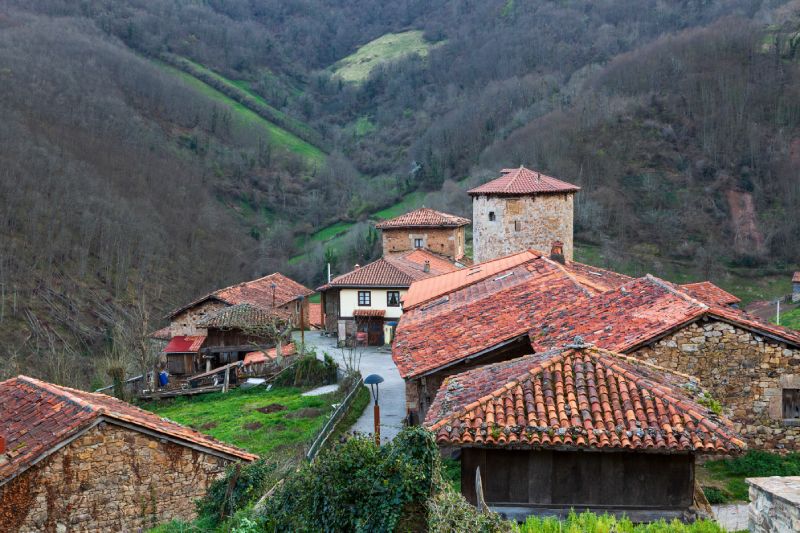
Bandujo/Banduxu, an isolated Asturian village. | Shutterstock
It is time to go to Asturias to enjoy the following isolated village of Spain. Banduxu was an important granary during the Middle and Modern Ages. Thanks to this it keeps a lot of old hórreos. Its church also has a very distant origin in time, as the first references to it are from the 10th century. Its Romanesque aspect, on the other hand, is from the 12th century. Together with the Tower of Bandujo and the houses of the place, it constitutes a medieval town of great interest. To get there, the only option is a road that connects with Proaza, which is also heritage from the Middle Ages.
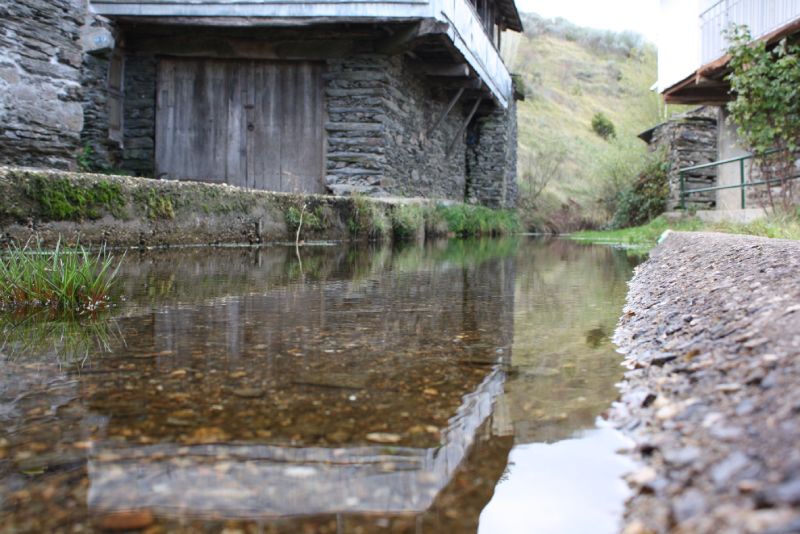
Camba River on its way through Campobecerros. | Flickr (Xabier Martínez Rolán)
Nature, pilgrimage and huge infrastructures come together in Campobecerros. The AVE construction of the Madrid-Galicia corridor brought new life to this town in the Massif Central of Ourense. The immense valleys of Serra Seca, the Camba River and the reservoir das Portas show the way from A Gudiña, also from Ourense. As well as the railway tunnels and old abandoned stations in tiny inns. This is the route followed by the pilgrims of the Way to Santiago of the Vía de la Plata through Sanabria. The history of this place is linked to this route and to the Order of Santiago and San Juan. On the other hand, the town is the gateway to the O Invernadeiro Natural Park.

Aós de Civís. | Flickr (Kevin Rodriguez Ortiz)
This beautiful town of Lleida is so well hidden that it can only be reached by a road from outside Spain. Thus, you have to pass through Andorra to get to Aós de Civís/Os de Civis. The reward is a purely Pyrenean environment at an altitude of more than two kilometres. The fact that it was one of the most isolated Spanish villages during the last century almost made it disappear. Without access, telecommunications or electricity, it was at the cliff’s edge. However, it managed to survive. Its particular location and the good preservation of its huddled houses have helped it become a good tourist destination nowadays.
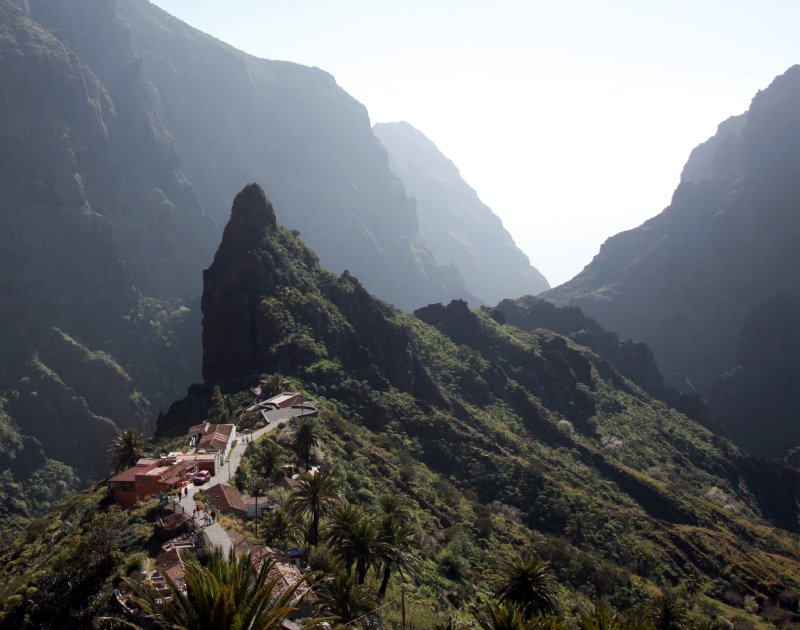
Masca and its ravine. | Wikimedia
On the island of Tenerife you can find what many people call the Machu Picchu of the Canary Islands. Masca is found on top of a cliff in the Teno Natural Park. It is surrounded by mountains and gives access to the Masca ravine. A route runs along this ravine, which, after big slopes and a difficult downhill, ends up on a black sand beach. Given the great difficulty in undoing this route, most people choose to get to the village by taxi and return by boat to the port of Los Gigantes, seeing the cliffs of the same name along the way.
Now back to Masca, its vegetation is worth mentioning, which merges in several parts of the urban layout. Its houses are at the same time a great example of traditional Canarian architecture, despite the fact that this isolated and beautiful village was burnt down at the beginning of the 21st century. However, today it has been completely restored.
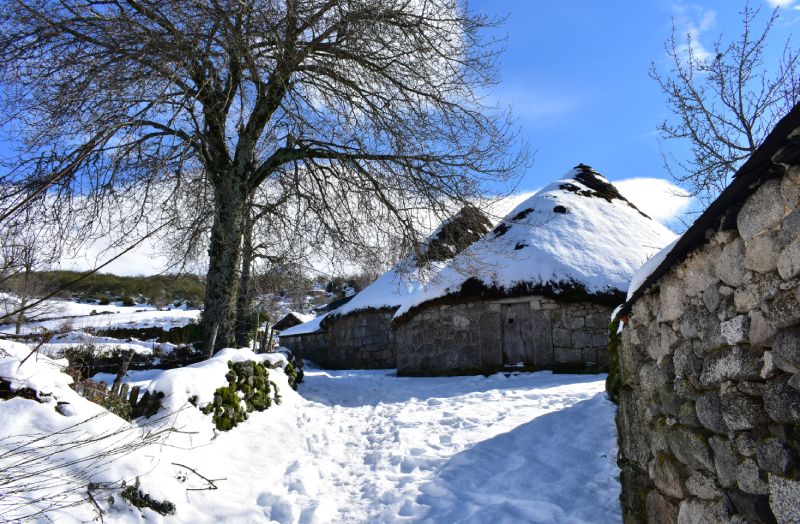
Pallozas of Piornedo in winter. | Shutterstock
The primitive appearance of the pallozas of Piornedo sets the scene for a visit to this hidden and charming town in Lugo. Over a thousand metres high, the Ancares are the backdrop of this village in the Cervantes Council. The local inhabitants used this type of pre-Roman circular construction until a few decades ago. Today they serve as museums and demonstration of their local traditions. To complete the trip, there are several hiking routes that ascend to nearby peaks such as the Mustallar.
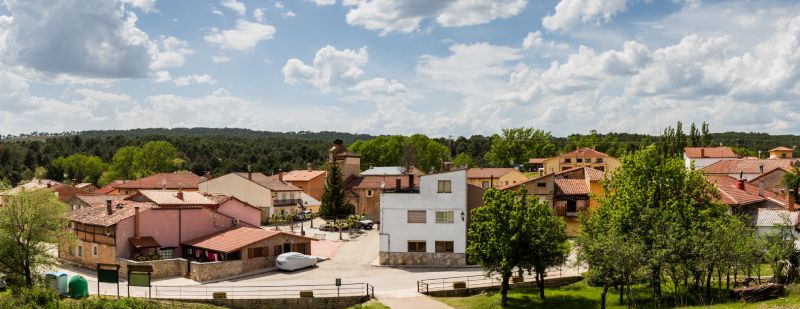
Muriel Viejo in Soria. | Wikimedia
This review of isolated villages of Spain continues in a hidden valley of Soria, in Muriel Viejo. Being crossed by the river of the same name and surrounded by peaks, the Iberian origin of the name points out to a distant past. In any case, its name indicates that it is older than the nearby Muriel de la Fuente. During the Middle Ages it was associated with Calatañazor and Osma, being an area of Christian expansion. It has several hiking routes in the vicinity that allow one to enjoy medieval ruins that indicate that the village was previously in a different position. The elms and pines stand out, being used for centuries by the local resin workers and lumberjacks.

Peñalba de Santiago in winter. | Wikimedia
Although on the map it looks like it is near Ponferrada, 21 kilometres, there are about 600 metres of unevenness between the two. This results in a remarkable isolation in Peñalba de Santiago, especially during winter. This was exploited in the Visigothic period by several hermit saints who caused the adjacent valley to become known as “del Silencio”. In this way, a small monastery was founded and ended up being the current church of Santiago el Mayor. It is a true Mozarabic marvel.
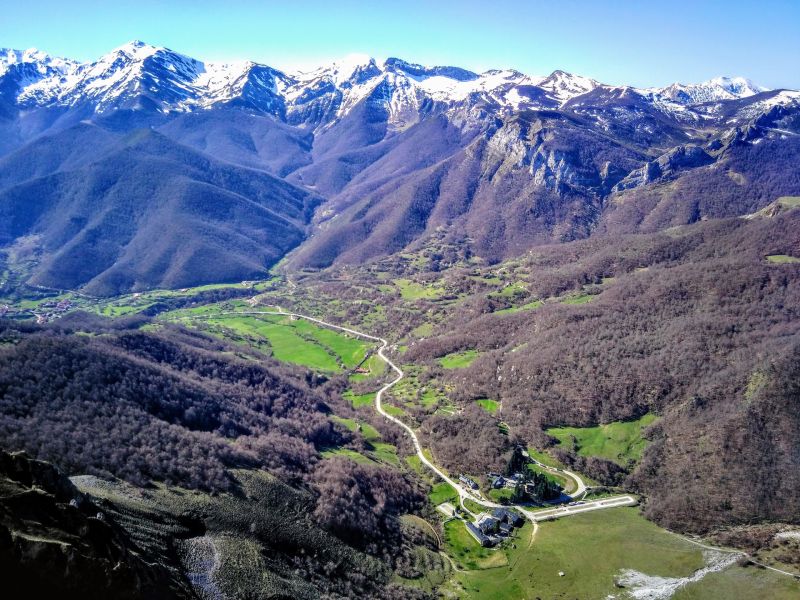
Views of Fuente Dé, a very isolated village. | Shutterstock
This tiny village concludes the review of isolated villages in Spain. It has only seven inhabitants and is hidden in a glacial cirque. Fuente Dé has the honour of witnessing the birth of the river Deva and has beautiful beech forests. On the other hand, a cable car links the village to the viewpoint of El Cable. The unevenness that it surpasses is of more than 750 metres, after which the whole valley can be seen. Its location offers spectacular routes in the surroundings of the Picos de Europa. For example, you can reach the monastery of Santo Toribio of Liébana after 22 kilometres or climb the 1,916 metres of the Alto de la Higuera. You can also use this opportunity to visit Potes, the capital of Liébana.